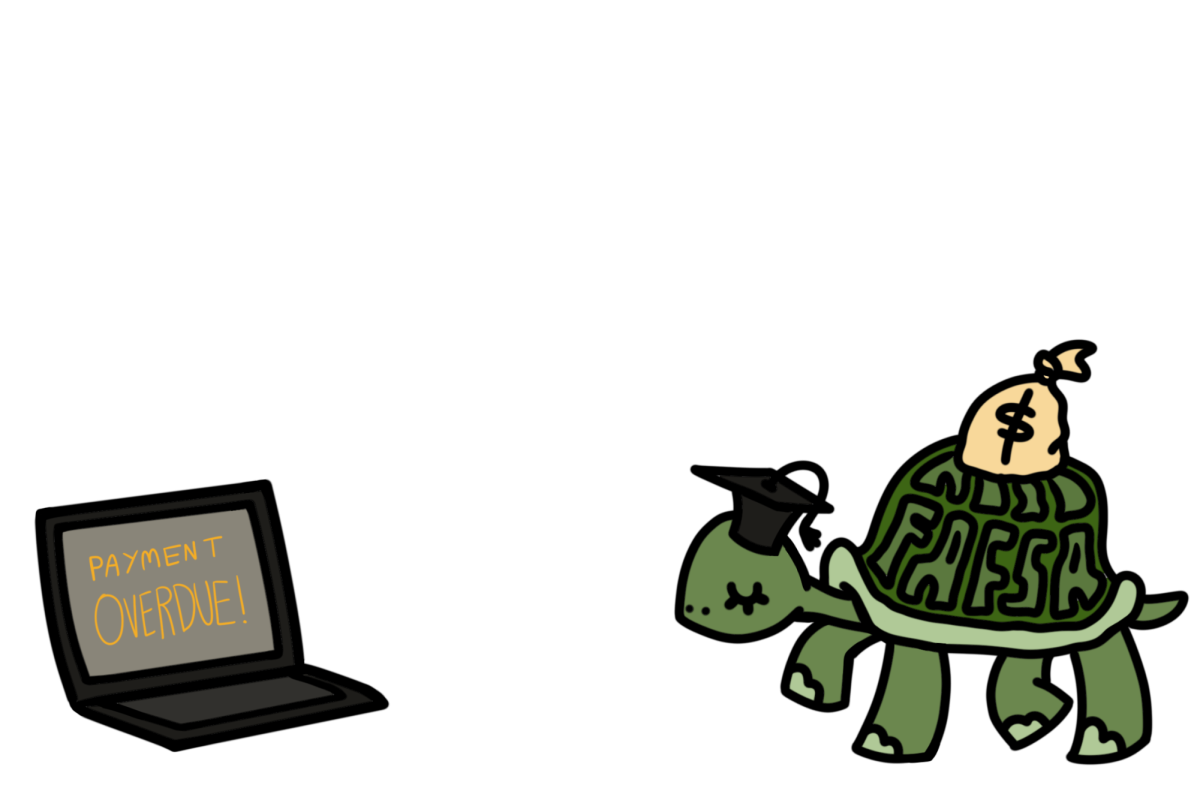Due to problems with the implementation of the FAFSA Simplification Act and California not having a state budget for the fiscal year, the processing of financial aid for students was slowed for Cal Grants. Awards are now expected to be received by early August according to Chip Pierce, director of San Diego State University’s Office of Financial Aid and Scholarships.
“The Cal Grant was held hostage by the state budget, and the reason for that is the California Student Aid Commission had planned for something they called Cal Grant Modernization to happen for 2024-25,” Pierce said.
Due to uncertainty with receiving funding, both new and returning students couldn’t be processed for awards but now that a Cal Grant roster for continuing students has been received by the department, they can be.
“We actually are pretty much caught up where we need to be as far as processing,” Pierce said. “We’ve tried to look at some counts as far as applications received and students awarded. For fall 2024, we actually have more awarded students this year than we did last year, which is great.”
Awards are currently being processed and adjusted as more aid is put into place by the Student Aid Commission.
Although most of the issues with the FAFSA simplification have been addressed, there are still some lingering problems .
According to Pierce, the biggest issue is when a student and their parent contributor have filled out their application completely but a student aid index can’t be calculated.
“Those cases are relatively small, but that’s very troubling for the student and parent because there’s nothing we can do to help them,” Pierce said. “They’re random, and as aid administrators, we’re still finding things as we look through the data that are just kind of anomalies, they’re strange.”
One of the larger problems that is being fixed is for mixed-status families where a student, parent or both don’t have a Social Security Number (SSN).
“One selling point with the department was that in those cases those parents, even without an SSN, still could obtain an FSA ID and go ahead and submit a FAFSA on behalf of their student,” Pierce said. “The problem is it didn’t work as intended and many of these students and parents couldn’t complete their application early on.”
To solve this problem, the department is allowing these students and contributors to make an FSA ID without the new process so they can complete their FAFSA applications.
Another past issue included aid administrators not being able to make corrections to their FAFSA forms for students.
“We now are able to submit corrections to student FAFSA data online through something that’s called the FAFSA Partner Portal,” Pierce said. “Students that reported that they had unusual circumstances and were coded as provisionally independent, we now are able to go through and complete the review of those students.”
One of the areas where the new FAFSA process has succeeded, according to Pierce, is the direct data exchange from the IRS which allows for more accurate aid information while also asking fewer questions.
Another success, according to Pierce, is that fewer verification documents need to be processed, allowing for more time to provide student support.
“If there is an unusual or special circumstance we have more resources to help those students and parents,” Pierce said. “The more the process can build that in and take care of it automatically, the less time we have to burden ourselves processing documents and asking students and parents to provide all this background information.”
Both Pierce and San Diego State University recommend that students check their SDSU email and My.SDSU portal through the “Tasks” and “Financial Account” tiles at least once a week.
“Be aware,” Pierce said. “I think a lot of folks when they apply for financial aid, they fill out the FAFSA and they think that’s all there is to it. It’s not. Frequently there are multiple things that have to be done after the fact and My.SDSU is the place to look for that.”
Pierce also recommends that students look at their budgets to see how much they have to pay with aid to plan how they’re going to meet their deadlines.
With all the issues that have arisen with implementing and processing the changes to the FAFSA application and processing, there’s some concern that there won’t be an Oct. 1 launch for the next academic year.
“It has become a political liability for the Department of Education and any administration to not let that happen,” Pierce said. “So my hope is what they’re doing is they’re focusing on fixing the remaining problems and making sure that it is out there by October 1. I think that will happen, I really do.”
Students who need help filling out their FAFSA application or receiving aid can contact the Cal Coast Student Financial Center.
For more information on personal fee deadlines and how financial aid impacts them, students can look at their My.SDSU portal under the “Financial Account” tile or look at the SDSU payment due date schedule.
“We have worked hard to get to a good place for Fall,” Pierce said. “For those folks that still have problems, issues, unusual circumstances, we are here to help. So just reach out, our staff can help.”






